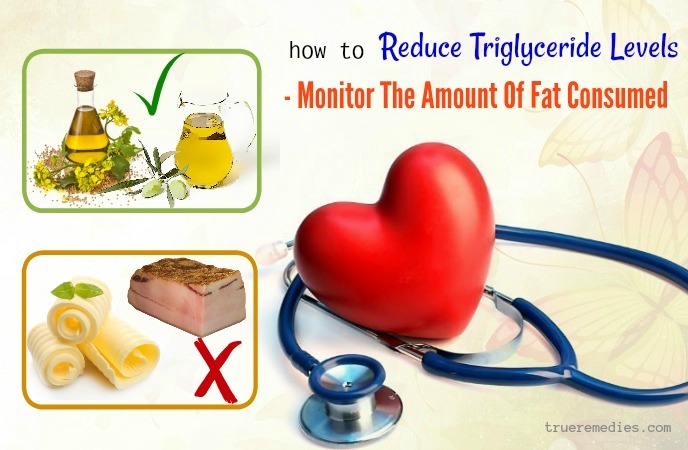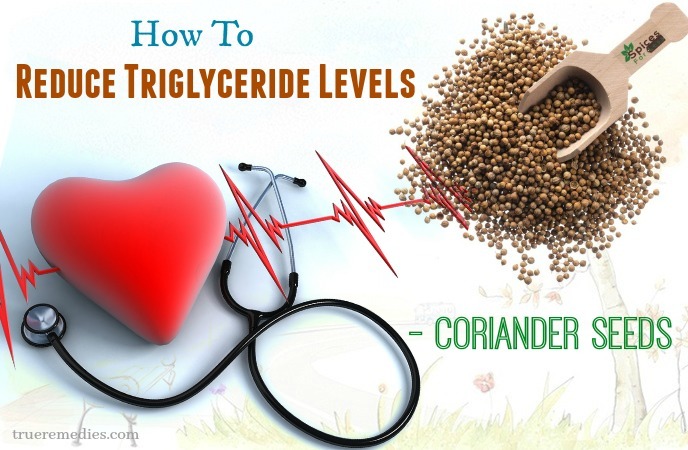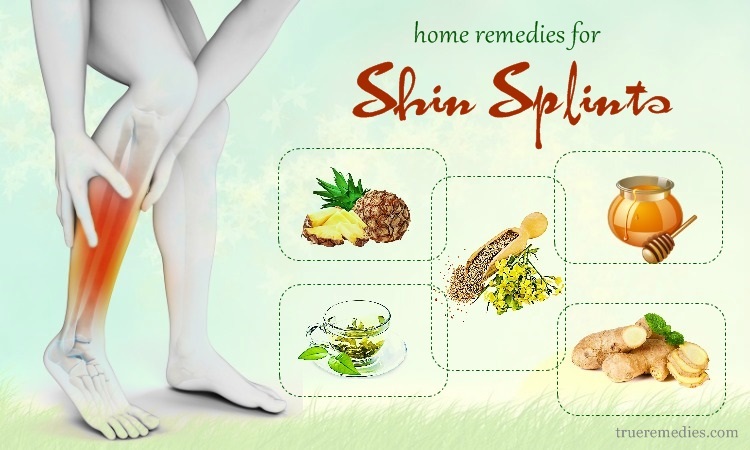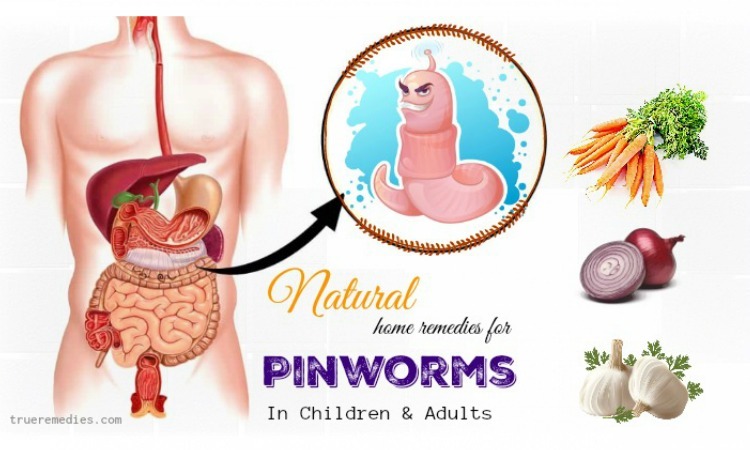Contents
Triglyceride is a type of fat or lipid found in the human blood. Triglyceride levels are usually tested at the same time as cholesterol. High triglyceride levels are a concern as it can increase the risk of heart disease and stroke. If your doctor says that your blood triglyceride levels are too high, you can change your lifestyle and diet to lower your triglyceride levels naturally. I know that the reason you are reading this article of 30 Tips On How To Reduce Triglyceride Levels In Blood Naturally is to learn how to treat this problem at home, but before that, you had better understand some basic information about it. Here’s some useful knowledge that you should know.
What Is Triglyceride?
Triglyceride accounts for 95% of the daily fat we consume in our diet. It is also a major constituent of vegetable oils and animal fats. After digestion, triglycerides are used in the form of cellular energy when moving in the bloodstream. If the amount of calories you consume exceeds your body's ability to digest, overweight, obesity, and triglyceride levels are unavoidable. This is also the cause of cardiovascular disease, diabetes and many other serious diseases.
Triglycerides and cholesterol are two different kinds of lipids circulating in the blood. Triglycerides store calories which are not used and produce energy to the body, cholesterol is used to produce some hormones and build cells.
Triglyceride is a molecule that contains three fatty acids. As introduced into the body, triglycerides move to the small intestine, separating and combining with the cholesterol to produce energy whenever the body needs it. This energy will be stored in fat cells and liver cells. So, when the body accumulates too much triglyceride, the amount of triglyceride in the blood will rise. This affects the health of the body. Triglycerides accumulate in the bloodstream and cling to the walls of the arteries, creating plaque on the arteries. As the artery narrows, the circulation of the blood is blocked. This can cause atherosclerosis, stroke, myocardial infarction, or fatty liver diseases.
To check your blood triglyceride levels, you need to perform blood lipid tests to help determine the changes of blood lypoprotein. The Triglyceride index below will show you the status of triglyceride levels in your body [1]:
- Normal: <1.7 mmol / L
- Slightly high: 1.7 – 2.25 mmol / L
- High: 2.26 – 5.64 mmol / L
- Very high:> 5.65 mmol / L
What Are Common Causes Of High Triglyceride Levels?
Here are common causes of this problem:
TrueRemedies Partner Solutions

Need a Help from the Leading Expert Online, Available 24/7?
They’re all here and ready to answer your questions online or by phone. Keep asking questions until you get the answer you need.
- Age And Gender
Surprisingly, age and gender are the causes of this condition. Studies have shown that estrogen affects the metabolism of fats and indirectly affects the blood vessels. Women at the age of 15-45 often have very high levels of triglycerides. However, as the menopause progresses, the amount of triglycerides and bad cholesterol gradually increase, thereby raising the risk of atherosclerosis.
- Obesity
This has been identified as the leading cause of high triglyceride levels. When the body weight exceeds the allowed level, the amount of fat in the blood will rise. Then, heart disease, high blood pressure and atherosclerosis will likely happen to you. You are obese due to unethical diet. It is important to lose weight and keep your weight at acceptable levels by maintaining science diet and lifestyle.
- Frequently Consumes Too Much Fat
Consuming too much saturated fat can cause high cholesterol and triglyceride levels. Foods with high saturated fat content are beef, goat meat, eggs, and milk. Processed foods contain more coconut oil, palm oil, cocoa butter also contain high fat content. Instead of eating too much fat, you should set up a scientific diet. Eat plenty of fresh green vegetables, drink plenty of water. Low fat foods will help your body absorb better and help you avoid some diseases.
- Stress
Stress is the cause of many diseases, including high triglyceride levels. As an explanation for this, doctors say that when you are fatigued or under heavy pressure from work, you tend to eat more, exercise less, drink alcohol more, and use more stimulants. All of this leads directly to high triglyceride levels.
- Do Not Exercise Regularly
Regular exercise is always good for your health. Do not exercise regularly will increase bad lipoprotein (LDL), lower cholesterol, and elevate triglyceride levels.
- Smoke
Smoking will reduce the amount of good HDL cholesterol and increase triglyceride levels in your body. This can lead to cardiovascular disease. Therefore, you should quit smoking habits right now.
- Sugar
Sugar can cause your heart to be at risk for some diseases. Excess glucose is converted into triglycerides by the liver. Therefore, stay away from sugary sweet carbohydrates like glucose and sucrose will significantly limit the levels of triglycerides. There are some foods that you may not know that they have a lot of sugar. So we will suggest that you should avoid certain foods that cause high triglycerides, such as soft drinks, baked foods, cereals, and creams.
What Are Common Symptoms Of High Triglyceride Levels?
Here are common symptoms of this problem:
- The pancreas is swollen, causing abdominal pain abruptly.
- Anorexia.
- Nausea and vomiting.
- Fever
- Chest, back, elbow, and heel appear blisters that look like acne, but they are yellow. However, they do not cause itching or pain.
- Shortness of breath
- Always feel tired
- Headache
You may experience other symptoms not mentioned. If you have any questions about the signs of the disease, please consult your doctor.
Who Is At High Risk Of This Problem?
High triglyceride levels is a common condition. It can happen in people with a family history of this illness and people with a high fat diet. People who have problems related to the ability to regulate their bodies, such as those with diabetes, obesity or the elderly, are also at higher risk for disease. In addition, stimulants and addictive substances such as alcohol or tobacco also increase the likelihood of this. High triglyceride levels can affect patients of all ages, but older people are at higher risk for this condition. People who drink too much alcohol, or have high blood pressure are more likely to get this problem. Besides, using some specific medications like estrogen therapy, diuretics, birth control pills can raise triglycerides.
You can control high levels of triglycerides by minimizing those risk factors. Please see your doctor for more information.
When To See A Doctor?
If you are 20 years or older, you should check your triglyceride levels at least every 5 years. If the level is higher than the allowable level, doctors may ask for additional tests. In addition, if your family members have high triglyceride levels, diabetes or heart disease, you also need to check your triglyceride levels more often. Having the same diet and lifestyle among family members also puts you at high risk of having the same condition with them. Besides, if you have any of these signs or symptoms or have any questions, please consult your doctor. Each person's condition is different, so please consult your doctor to select the most suitable option.
Above are some basic information you should know about triglyceride levels. We want to emphasize that high triglyceride levels need to be treated as soon as possible to avoid serious complications. Here are tips on how to reduce triglyceride levels in blood fast and naturally. Check out on TrueRemedies.com!
Top 30 Tips On How To Reduce Triglyceride Levels In Blood Naturally At Home
1. Cut Down Sweets
This is the first home remedy in this list of tips on how to reduce triglyceride levels in blood. Refined sugar and sugar can increase the triglyceride levels, so the fastest way to reduce triglyceride levels is to cut down on sugar consumption. That way, you can cut down on unnecessary calories in sweets (calories will be converted into triglycerides – a form of fat – stored in the body).In addition to limiting the consumption of biscuits and sweets, you should stay away from things like sweet desserts and fruit juices. Please limit the amount of supplementary sugar to less than 5-10% of total calories. The amount of sugar can be up to 100 calories a day for women and 150 calories for men [2].
2. How To Reduce Triglyceride Levels – Reduce Refined Carbonate
This is another must-try treatment in this list of tips on how to reduce triglyceride levels fast. White rice and grits made from white flour or Semolina powder can increase triglyceride levels in some people. If your doctor thinks that consuming these foods can hurt you, it is best to reduce your carbohydrate intake to reduce triglyceride levels quickly.
Besides reducing your carbohydrate consumption, you should add protein to the diet. Proteins have a lower “glycemic index” than carbohydrates. This means that protein is absorbed into the bloodstream more slowly. This is very helpful in lowering blood sugar levels and lowering the level of “lipids” (including triglycerides) in the blood. Good fats also help to stabilize blood sugar levels and reduce triglyceride levels. Instead of consuming refined carbohydrates, let’s choose whole grain breads and pasta.
3. Do Not Drink Alcohol
This remedy is one of little – known tips on how to reduce triglyceride leves fast. Alcohol can increase triglyceride levels, especially in people who are sensitive to these drinks. It is best not to drink alcohol while you are trying to reduce triglyceride levels. Once the triglyceride levels returns to acceptable levels, you can slowly drink alcoholic beverages again. However, do not drink too much and too often as it will cause triglyceride levels to rise again. Unfortunately, any alcoholic beverage can increase triglyceride levels. So, you should reduce the consumption of alcohol, beer, and red wine [3].
4. How To Reduce Triglyceride Levels – Consume Omega-3 Fatty Acids
The next tip on how to reduce triglyceride levels naturally is consuming omega-3 fatty acids. Omega-3 fatty acids are considered “good” fat, and consuming this fatty acid regularly will help to reduce triglyceride levels in the body. You can eat about 2 servings of fatty fish per week. Applying this diet continuously is the best way for you to reduce triglyceride levels.
Fish rich in omega-3 fatty acids include salmon, mackerel, sardines and tuna. Other omega-3 rich foods include flaxseed oil, soybeans, legumes, walnuts, and dark green leafy vegetables. You should add these foods to your daily diet. Good quality omega-3 supplements are especially beneficial because they help balance the overall omega-3 / omega-6 ratio.
5. Food Supplements From Plants
This can be quite difficult for you if you do not like eating vegetables, but if you can do this then the effect of it will make you surprised. If you add plant foods into your diet (instead of red meat) which consist of protein, you will notice a significant reduction in cholesterol and triglyceride levels. Dried beans, peas and soybeans are all rich in protein sources. You can also eat chicken instead of red meat as this is an appropriate substitute for lowering triglyceride levels.
6. How To Reduce Triglyceride Levels – Fiber Supplementation
This sounds strange when it comes to tips on how to reduce triglyceride levels in blood, but it works. Fiber helps regulate the absorption and movement of food in the body. In addition, fiber rich foods can help to significantly reduce triglyceride and cholesterol levels. Fiber combines with water in the intestinal tract to form a gel-like compound to attach the fat. This process reduces the amount of fat (including triglycerides) that is absorbed into the body.
Not only that, fiber also helps to maintain the health of the digestive system in many other ways. Fiber also helps you feel full faster, so you do not eat too much. To add fiber to your diet, increase the consumption of whole grains. In addition, you should eat more beans, fruits and vegetables. Drink plenty of water when adding fiber, otherwise, you will have gut problems (from moderate to severe).
7. Monitor The Amount Of Fat Consumed
Saturated fats and trans fats can be particularly harmful and cutting off these fats from the diet will be very helpful in reducing triglyceride levels. Packed foods and fast foods are foods that contain lots of these “bad” fats. In addition, animal foods, foods made with unsaturated vegetable oils, grease, lard, or margarine are also very harmful. You should choose monounsaturated and polyunsaturated fats. The body needs fat replenishment, but fat sources must be good for health and not adversely affect triglyceride levels. Good fat sources include olive oil, canola oil, rice bran, walnut oil and flaxseed oil.
8. Limit The Amount Of Fructose Consumed
The next one in this list of tips on how to reduce triglyceride levels naturally is limiting the amount of fructose consumed. Fructose is a natural sugar in most fruits, honey and sugar. By limiting the amount of fructose consumed to less than 50-100 g per day, you can reduce triglyceride levels faster.
Low fructose fruits include apricots, citrus fruits, yellow melons, strawberries, avocados and tomatoes. These are the right choices if you want to add fruit to your diet. Fruits that contain a lot of fructose include mango, bananas, grapes, pears, apples, watermelon, pineapple and raspberries. These are the foods you should avoid or limit consume.
9. Choose Foods Containing Complex Carbohydrates
In general, you should cut down on carbohydrates to lower triglyceride levels. However, carbohydrates should not be completely cut down to avoid health complications, including cardiovascular disease. Instead, you should avoid consuming refined carbonated carbohydrates and replacing them with complex carbohydrates. Refined carbonated carbohydrates include foods from white flour or Semolina flour, such as white rice, white bread and many types of pasta. Complex carbohydrates include whole wheat pasta, whole grain bread, brown rice, and oats [4].
Note: keep a copy of glycemic index (GI) and use it to get your daily diet. This index provides information on calories and carbohydrates in each serving from many fresh and processed foods. GI helps you set the limits on the amount of carbohydrates that you consume in each meal, thus ensuring that you get enough carbohydrates to produce energy but do not cause fatty deposits in your blood.
10. How To Reduce Triglyceride Levels – Adjust Calorie Intake
No wonder, this is definitely one that should be mentioned in this list of tips on how to reduce triglyceride levels in blood naturally. Pay attention to the amount of calories consumed each day to see if you can cut it (consult your doctor for a safe and easy target).This is especially useful for people who are overweight or obese. Being overweight may cause increased triglyceride levels.
Most women should consume 1200 calories a day, and men should consume 1800 calories a day (which may vary depending on activity level and other factors). If you need to lose weight or reduce your caloric intake, your doctor may recommend a lower calorie diet. However, you should not arbitrarily cut calories without the consent of the doctor. It is better to eat smaller meals than to eat 2-3 large meals a day. In addition, you should avoid snacking in the evening before going to bed to improve your condition [5].
11. Supplement Soy Protein Daily
Supplementing soy protein daily is the next remedy in this list of tips on how to reduce triglyceride levels fast. Soy protein is available in the form of powder that can be mixed with fruit juice, vitamins, etc. Many studies have shown that dietary supplements of soy protein may help reduce triglyceride levels and have a positive effect on cholesterol levels. You can use soy protein as instructed. Studies show that whey protein also has a positive effect on triglyceride levels.
12. Take Functional Foods Which Supplement Vitamin B3
This is another must-try treatment in this list of tips on how to reduce triglyceride levels naturally. Vitamin B3 (niacin) has been shown to be effective in lowering triglyceride levels. However, consult your doctor and closely monitor the process of niacin supplementation because high doses of niacin may cause side effects such as red skin, stomachache, headache, dizziness, blurred vision, and damage to the liver.
13. How To Reduce Triglyceride Levels – Do Exercise
This remedy is one of little – known tips on how to reduce triglyceride levels fast. Moderate exercise is an essential part of lowering cholesterol and triglyceride levels. Absolutely not set up strict training regimen.
Starting with a challenging exercise program will help lower triglyceride levels is a false thought. In fact, this will make you want to give up the exercise program sooner. It's best to start with a 10-minute exercises each day, then increase by 1-2 minutes per week until you can do exercises 30-40 minutes a day but still feel comfortable. Besides that, let's apply some form of exercise. You can walk, cycle and follow DVD tutorials every day. Be creative and apply various forms of exercise to not feel boring. Not only that, you can experience and know what is your favorite form of exercise [6].
14. Quit Smoking
This is the next crucial tip on how to reduce triglyceride levels in blood. Quitting smoking is a necessary step to reduce the risk of heart disease and lower triglyceride levels. Cigarette smoking contributes in many of the risk factors for cardiovascular disease, including increased blood clots, arterial damage, and difficulty in controlling “lipid levels” (including triglycerides) in the blood. Stopping smoking will help to improve your health significantly. Even so, quitting smoking quickly is rarely effective. You should slowly quit smoking by using a supportive method, such as nicotine chewing gum and other quit smoking support products. If possible, learn about the program that supports people who want to quit smoking, or you can go to the doctor for guidance and support
15. How To Reduce Triglyceride Levels – Eat Garlic
Garlic has been studied as a natural treatment for conditions associated with heart disease, such as high triglyceride levels in blood. In accordance with the 2006 study published in the Journal of Nutrition, garlic can help lower blood sugar, cholesterol and triglycerides levels.
Fresh garlic possesses a more profound effect than the processed one in regard to controlling these parameters as raw garlic features lipid-lowering activity.
Consume 2-3 raw garlic cloves before having your breakfast for several months. Also, add raw garlic to your salad dressings. Alternatively, you can also take garlic supplements after having consultations of your doctor.
16. Use Apple Cider Vinegar
Can apple cider vinegar lower triglyceride levels? In fact, a few animal studies have demonstrated a connection between consuming apple cider vinegar and lower triglycerides and the results was rather positive.
Needless to say, a good lifestyle and a well-balanced diet can reduce the amount of LDL (bad cholesterol) and triglycerides in your blood. Apple cider vinegar also greatly support to lower such substances in your blood.
According to a 2008 study published in the Parkistan Journal of Biological Sciences, it was found that apple cider vinegar aided in improving serum lipid profile in both normal and rates with diabetes by reducing triglycerides and LDL (bad cholesterol) and increasing HDL (good cholesterol) levels. It is thanks to the acetic acid content in apple cider vinegar, which helps stimulate the genetic material’s expression, thereby activating the fatty acid oxidation enzymes. The result is a significant decline in body fat accumulation. It explains why apple cider vinegar could be used for weight loss [7].
What you need to do is putting a teaspoon of unfiltered, raw apple cider vinegar in a glass of water. Add some honey to flavor and have this liquid twice per day for a few months. Alternatively, you can also mix apple cider vinegar with fresh apple, orange, grape or any other fruit juices.
17. How To Reduce Triglyceride Levels – Coriander Seeds
Considered as an old-age tip on how to reduce triglyceride levels in blood, coriander seeds has hypolipidemic activity on lipid metabolism [8] [9]. The Journal of Environmental Biology showed a reduction in levels of cholesterol and triglyceride in animals fed coriander seeds.
To use coriander seeds for triglyceride reduction, simply add 1-2 teaspoons of coriander seed powder to one cup of water. After boiling, strain and let it cool down. Have this solution 1-2 times per day for several months to get good results.
18. Cayenne Pepper
The heat from cayenne pepper does much more than just flavoring your dishes. Capsaicin is the active ingredient responsible for that heat, which help eliminate pain caused by gastrointestinal issues and support weight loss. This alkaloid compound also helps decrease LDL and triglyceride levels in obese people. Hence, it is no doubt that this spice could make this list of tips on how to reduce triglyceride levels [10] [11].
Simply add ½ – 1 teaspoon of cayenne pepper into hot water. Have this mixture twice per day for several weeks. Or, you can also take cayenne supplement after consulting your doctor.
19. Cinnamon
Cinnamon is a popular aromatic spice used commonly in India, China, and Southeast Asia. According to a study published in “Diabetes Care”, it was found that 1-6 grams of cinnamon taken internally every day could help people with type 2 diabetes reduce their triglyceride levels.
When it comes to using cinnamon for triglyceride reduction, you may find it unpalatable if taken in the plain form. Fortunately, cinnamon is also available in the capsule form at most health food stores or drugstores. Use it as the consultation of your doctor. You can also add ground cinnamon to your oatmeal or coffee to reap its benefits.
20. How To Reduce Triglyceride Levels – Red Yeast Rice
Red yeast rice is popular in Chinese Medicine for triglyceride reduction. It has a host of naturally occurring statins and exhibits modulating effect on the C-reactive protein (CRP) and lipids concentrations. In turn, this helps to reduce triglyceride and cholesterol levels.
Notes:
- Red yeast rice is not recommended for pregnant or lactating women or people with kidney or liver problems.
- Also, be cautious upon taking red yeast rice at home because some of them might have lovastatin as well as other chemicals coming with adverse effects.
21. Reishi Mushroom
Reishi mushroom is highly beneficial for people with cardiovascular disease thanks to its rich content of sterols, coumarin, mannitol, ganoderic acids, and polysaccharides – all of which are heart-saving substances.
In reishi mushroom, there are ganoderic acids helping reduce triglyceride levels, eliminate excessive cholesterol from blood, reduce blood pressure, correct arrhythmias, and alleviate platelet stickiness.
To harness benefits of reishi mushroom for triglyceride control, take its extract. The right dose will depend on some factors such as current health status and age. Therefore, you should consult your doctor in advance.
22. How To Reduce Triglyceride Levels – Maintain A Healthy Weight
Overweight people are at a higher risk for high triglyceride levels. However, some simple lifestyle changes can help you take control of it. Maintaining a healthy weight through proper diet and exercise regimes is beneficial for your effort of reducing triglyceride levels. Whenever you take more calories than you need, your own body turns them into triglycerides and keeps them in the fat cells. It explains why losing weight is a good way to lower high triglyceride levels.
Cut down on foods and beverages which are high in calories. Incorporate more fruits and vegetables to your diet. They are not only low in calorie but also packed with essential nutrients to improve your heart health.
23. Build A Regular Meal Pattern
Another factor triggering high triglyceride levels is insulin resistance. After having a meal, your pancreas cells will send a signal to release the insulin into your blood stream. This substance is responsible for transporting essential glucose to your body cells to be used for energy.
In case there is too much insulin in the blood, your body could be resistant to that, thereby making it hard for the insulin to be efficiently used. As a result, triglyceride and glucose levels in your blood will increase. Luckily, building up a regular eating pattern will help you prevent this problem.
A research showed that irregular meal patterns resulted in reduced insulin sensitivity and increased risk for heart disease [12] [13]. Nevertheless, the evidence is not clear in regard to meal frequency. Some experts claimed that having 3 meals a day greatly reduced triglycerides, in compared with having 6 small meals a day [14] .
In fact, no matter how many meals you have a day, eating regularly could help you improve insulin sensitivity and reduce triglyceride levels.
24. Eat More Soy Protein
Having a large amount of isoflavones, a kind of powerful plant compound, soy is another tip on how to reduce triglyceride levels naturally. Soy protein, in particular, has been proven to decrease triglyceride levels. The study carried out in 2004 showed the impact of soy and animal proteins on triglyceride levels. After about 6 weeks, the soy protein was reported to help reduce triglyceride levels by up to 12.4% more than that of animal protein [15]. You can find soy protein in tofu, soybeans, soy milk and edamame.
25. How To Reduce Triglyceride Levels – Consume More Tree Nuts
Tree nuts contain a concentrated dose of fiber, unsaturated fats, and omega-3 fatty acid, which combine together to reduce blood triglycerides.
Tree nuts are almonds, walnuts, pecans, pistachios, Brazil nuts, cashews, and macadamia nuts. However, nuts are rather rich in calories, so you should take them in moderation. For almonds, it is recommended consuming from 3-7 serving (about 23 almonds) per week to get the best effects [16] [17].
26. Keep Calm So That The Body Is Relaxed
This sounds strange when it comes to tips on how to reduce triglyceride levels fast, but it is very effective. Under pressure, a temporary increase in triglyceride levels occurs in many people. If you have hypertension due to overweight or genetic disorders, stress can make your condition worse. This is because under stress, the adrenal glands produce stress hormones that make the cardiovascular system overactive. Therefore, make sure that you are comfortable (both physically and mentally) during the treatment. Try to relax with the following techniques:
- Before going to bed, take a long walk to relax after a long day of stress. Take the time to ease the pressure of each and every day.
- Set aside about 30 minutes before going to bed to complete the day-to-day tasks (10 minutes), personal hygiene (10 minutes), and deep breathing and / or meditation (10 minutes).
27. How To Reduce Triglyceride Levels – Take Fibrate
Common fibrates include Gemfibrozil and Fenofibrate. Fibrates are carboxylic acids – an organic acid made up of carbon and oxygen. Fibrates also have hydrophilic properties, which are attracted to both fat and water. These drugs increase high density cholesterol and decrease triglyceride levels. They work by reducing the production of triglyceride-containing molecules in the liver.
Note: Fibrates can irritate the digestive tract, the liver, and gallstone. These drugs are also dangerous when used together with blood thinners and can cause muscle damage when used together with statin drugs.
28. Take Nicotinic Acid
The most common nicotinic acid is niacin. Nicotine is another type of carbonic acid. Just like fibrates, nicotinic acid reduces the ability of the liver to produce triglycerides, called VLDL or very low density lipoprotein. Nicotinic acid increases the high density of cholesterol (“good cholesterol”) more than other drugs of this type.
Note: consult your doctor before taking nicotinic acid because this drug may react to medications and have dangerous side effects. Possible serious side effects of nicotinic acid drugs include difficulty breathing, severe abdominal pain, jaundice and dizziness. Although these side effects are not common, you should be alert.
29. How To Reduce Triglyceride Levels – Learn About Prescribed Omega-3
The next one in this list of tips on how to reduce triglyceride levels fast is consuming prescribed omega-3 fatty acids. Consuming omega-3 fatty acids may help lower triglyceride levels, and using high-dose prescribedomega-3 fatty acids also helps lower triglyceride levels. Omega-3 fatty acids are commonly prescribed as fish oil.
Note: Only take high-dose omega-3 supplements under the guidance and supervision of doctors as they may interact with other medications. Supplementing with omega-3fatty acids may cause blood to be too thin and hypotensive. Not only that, it can increase blood glucose levels, damage liver function and cause mental disorders.
30. Learn About Statins
Learning about stains is the next remedy in this list of tips on how to reduce triglyceride levels fast. The most commonly used statin drug is Atorvastatin. Other statins include Fluvastatin, Lovastatin, Pitavastatin, Pravastatin, Rosuvastatin and Simvastatin. These drugs lower cholesterol levels by blocking the enzyme HMG-CoA reductase. This is the enzyme that plays a key role in cholesterol production. The main use of statin drugs is to reduce the low density of cholesterol. It also reduces triglyceride levels but is often less effective than other drugs prescribed for the purpose of reducing triglyceride levels.
Note: Side effects of statin drugs are rare but very serious. Muscle damage is the most common side effect of this drug, especially when taken with Fibrate. In addition, this drug can also cause liver problems and increase the risk of diabetes.
How To Reduce Triglyceride Levels – Extra Tips
To reduce triglyceride levels fast, besides applying the tips above, you need to pay attention to some of the following:
- Always consult your doctor before changing your diet or level of physical activity. The sudden change will negatively affect overall health.
- Ask your doctor to test your triglyceride levels with your cholesterol at least twice a year. This step avoids sudden elevated triglyceride levels
- If you are overweight, cutting down 5 -10 % of your weight can reduce triglyceride levels significantly.
- Follow a low-fat diet
- Replace normal dairy products with low-fat ones.
- Limit saturated fats by cutting back red meat, butter, poultry, milk, cheese, palm and coconut oils.
- Take advantage of healthy monounsaturated fats such as olive and canola oil.
- Avoid processed and refined foods which may lead to an instant spike in the insulin, which may increase triglycerides.
Generally speaking, both diet and lifestyle factors have a main impact on the blood triglycerides. Therefore, if you make simple changes in lifestyle, you could reduce your risk of high triglyceride levels and improve your general health concurrently.
There, you have discovered some tips that help to reduce your triglyceride levels. Do not doubt about their effectiveness. You will be amazed at the effects that they bring you. If you have any contributing ideas about our article of “Top 30 Tips On How To Reduce Triglyceride Levels Fast And Naturally” introduced in How To Category, do not hesitate to drop your words below this post. We will answer as soon as we could.













